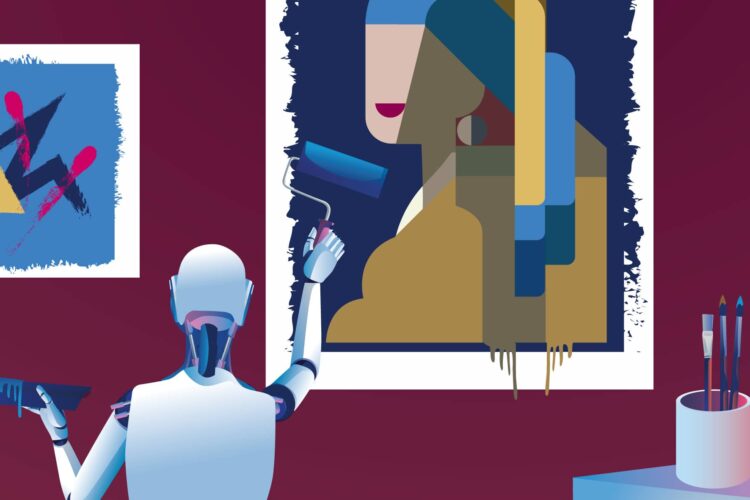We’ve all seen the writing on the wall: the era of data deprecation is here. More protections around personally identifiable information (PII) and how marketers can use it are rolling out all the time, and marketers who aren’t adjusting to privacy-first marketing will soon be in hot water.
Luckily, as tracking users across devices gets more difficult, the path forward for marketers is clear: creative is the new targeting. Even Meta, which built its business around its audience-targeting prowess, agrees.
Rather than relying on individualized targeting supported by cookies, the marketing of the future meets the audience where they are, delivering content and ads that resonate at each specific touchpoint on the customer journey. To win in a cookieless world, brands need to diversify and customize ad creative based on their business objectives and core audience.
But more creative is a challenge in and of itself: it requires more time, effort, and budget. Brands are looking to maximize efficiency, generate ad creative faster, and optimize spend–and in 2023, that means turning to AI.
So how can your team leverage AI right now to make scroll-stopping creative that resonates with your audience?
The How: AI ideation and concepting
We’ve all heard grandiose claims from AI companies and tech optimists about how AI will transform the way we do everything, and many of the most-touted tools are focused on creative, from writing copy to analyzing data to generating images or editing video.
But leveraging those tools effectively as they exist today isn’t so simple.
As appealing as the idea of outsourcing work like ideating, testing, and generating content might be to businesses looking to scale up while simultaneously tightening their budgets, you need to tread carefully when deciding how, when, and where to use these powerful but still emerging AI solutions.
Right now, the biggest AI opportunity when it comes to creative is streamlining the ideation and concepting process. When you’re brainstorming, AI’s tendency to create absurd outputs is a strength. AI can generate a wide range of new ideas for your team, some that a human would never consider or suggest.
That’s what a great brainstorm is all about.
Your team still needs to think creatively: they’re responsible for the inputs going into the AI! Look to create structured prompts for tools like ChatGPT (for text) or Midjourney or DALL-E 2 (for images) that include plenty of detail about what you’re looking for.

You can use these AI tools to source ideas based on past creative and let the tool know what kind of content you’re looking for, specific emotions you want to evoke, and the overall objective. You can also create prompts for text overlay and ad copy by inputting examples of copy that have already been approved in past ad creative.
You should also keep refining as you go. Don’t just plug one thing in and call it a day; engage with the outputs and give the AI more information about what you like or don’t like.
Remember, as in all things AI, your robot helper is only as good as what you put in–the better the prompt, the better the results.
Your team can then run with some of the ideas generated from the AI-powered brainstorm: build off of them, combine them, or tweak them to work for your specific business and audience.
Another upside? When you apply AI solutions this early in the process, you guarantee consistent human oversight. If you’re not directly using AI outputs, there’s a much lower risk of facing potential legal challenges in the future (more on that later).
The Why: using AI tools to optimize your creative
If creative is truly going to serve as the new targeting, data is still critical. Marketers need to understand which creative performs the best at different touchpoints. Here again is an excellent opportunity to tap into AI.
AI tools can help marketers and creatives extract better information and find an answer to the eternal question: why do specific creative assets rise to the top, while others sink?
Emerging tools like Treat (currently in Beta) aim to generate insights by grouping creative under specific themes, like lifestyle imagery vs. product showcase, which marketers can use to correlate with specific objectives, like which type of creative drives higher lifetime value (LTV). Marketers can use that information to identify patterns and build new best practices into the creative production and optimization process.

These tools can help your team make more strategic decisions and better bets on design that can lead to significant performance improvements across the board.
Your goal should be to build a database where you can store those insights. That’s nothing new; marketers have long relied on dropping the results of creative tests into static documents so everyone can harness the benefits of any new learnings.
But these new tools offer real-time insights so your takeaways are dynamic even as new campaigns go live. That’s a huge benefit in the long term and can help your team stay agile and adaptive to shifts in consumer behavior and platform performance.
The What: leveraging AI graphic design, copy, and creative assets
If you’ve done anything at all with AI, you’ve probably at the very least played with generative AI tools that generate copy (ChatGPT, Bard, Jasper AI, Anyword), and images (DALL-E 2, Midjourney, Adobe Firefly).
And there’s a lot AI can do to add to your creative arsenal. Tools like DALL-E 2 and Midjourney can generate specific images that speak to your demographic. Others, including Treat and the Google and Meta capabilities that will soon be available in-platform through their respective ad managers, are leaning into generative backgrounds you can incorporate into product shots. OpusClip uses AI to create “punchy” clips out of longer-form videos to use on Facebook.

You can even use AI to generate models and voiceovers for your creative, allowing your team to customize these assets to strike the right tone for your brand. Tools like LaLaLand make a diverse cast of AI models to show off your products. You can add a voice element to your videos with a generator like Lovo, which creates voices with your preferred accent, age, and gender.
Some AI ad generators, like Pencil, claim they can improve ad results by suggesting creative iterations and providing templates based on successful creative. This could be a huge creative relief for emerging brands but could be more challenging for enterprise companies that need more customization. They can also leave your brand in a reactive position and behind the curve if you’re not prioritizing discovering trends proactively before your competitors.
If all these applications seem too good to be true, you’re not wrong (for right now). You can’t just leap into generating all of the creative your marketing heart desires with AI alone–you need to make plans surrounding licensing, asset editing, legal protections, and more.
If you’re using generative tools like Midjourney and DALL-E 2, make sure you have the right commercial licensing plan in place to avoid legal issues. You also can’t directly edit the outputs those tools provide, which can be a big issue for any branded creative. However, Adobe Firefly is moving in the right direction by pairing generative AI with editing capabilities, and even more growth is expected in that area.
At the moment, AI for creative asset production is emerging tech, so it may not always generate the level of quality or specific kind of image you need. But you should continue exploring: stay up to date with what these tools can do and keep playing with them. The industry is moving fast and new capabilities are still to come.
This tech is also subject to some ongoing legal and ethical challenges that you should be aware of.
The But: evaluating potential challenges to ad creative AI solutions
The very nature of an emerging technology means that there are many questions still up in the air. That’s especially true of something like AI, which has massive potential but can feel more like the Wild Wild West than Silicon Valley. That brings us to the many possible legal, reputational, and ethical issues surrounding different uses of AI.

Artists and publishers are considering (or have already brought) lawsuits against companies that scraped their copyrighted work to train AI models without their consent. AI-generated content is often rife with factual errors, and concerns have been raised about underpaid workers overseas responsible for training AI tools.
These are all important challenges to the AI industry, and it’s important to keep an eye on how they shake out. But that doesn’t mean you should avoid AI entirely. Work with your legal team to assess potential risks—but don’t forget that not leveraging these game-changing innovations also carries risk, potentially leaving the door open to your competition.
The need for more and better creative is very real, and AI offers a lot of potential solutions to some of the challenges your brand will face in meeting this moment of data deprecation. In the end, it comes down to getting strategic about your approach.
The brands who will win in the age of data deprecation are the ones who strike the right balance and find a way to leverage these powerful tools with a minimum of risk.





